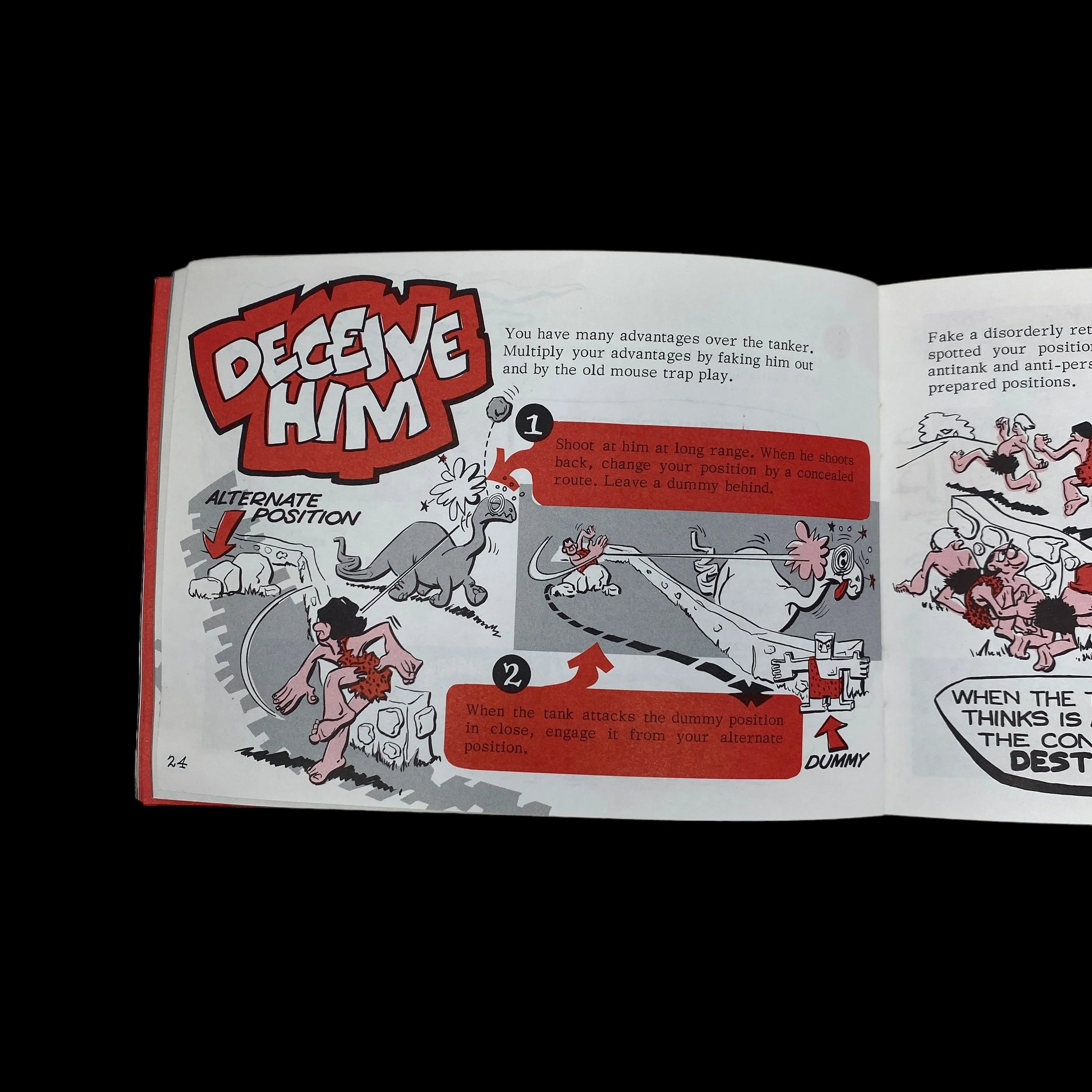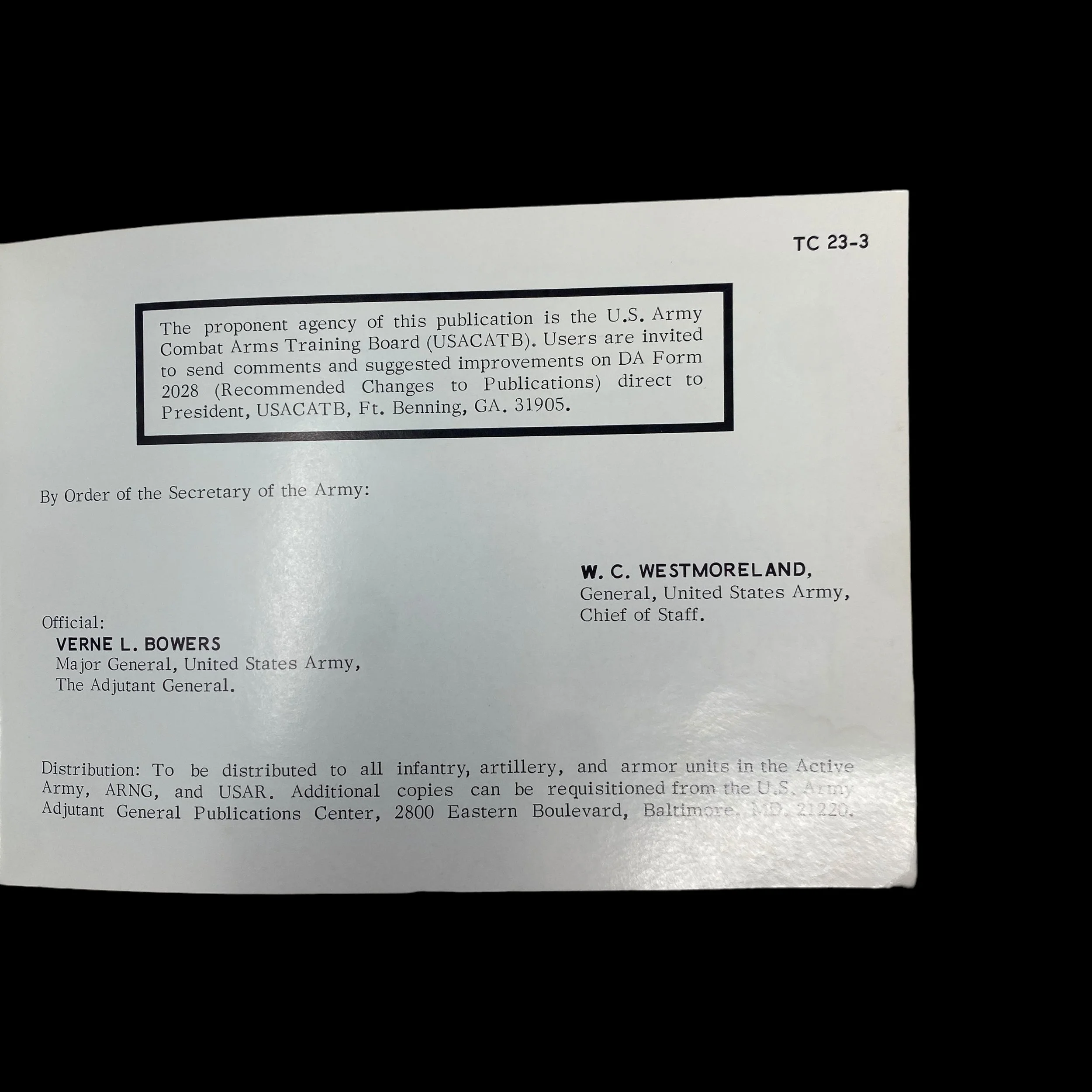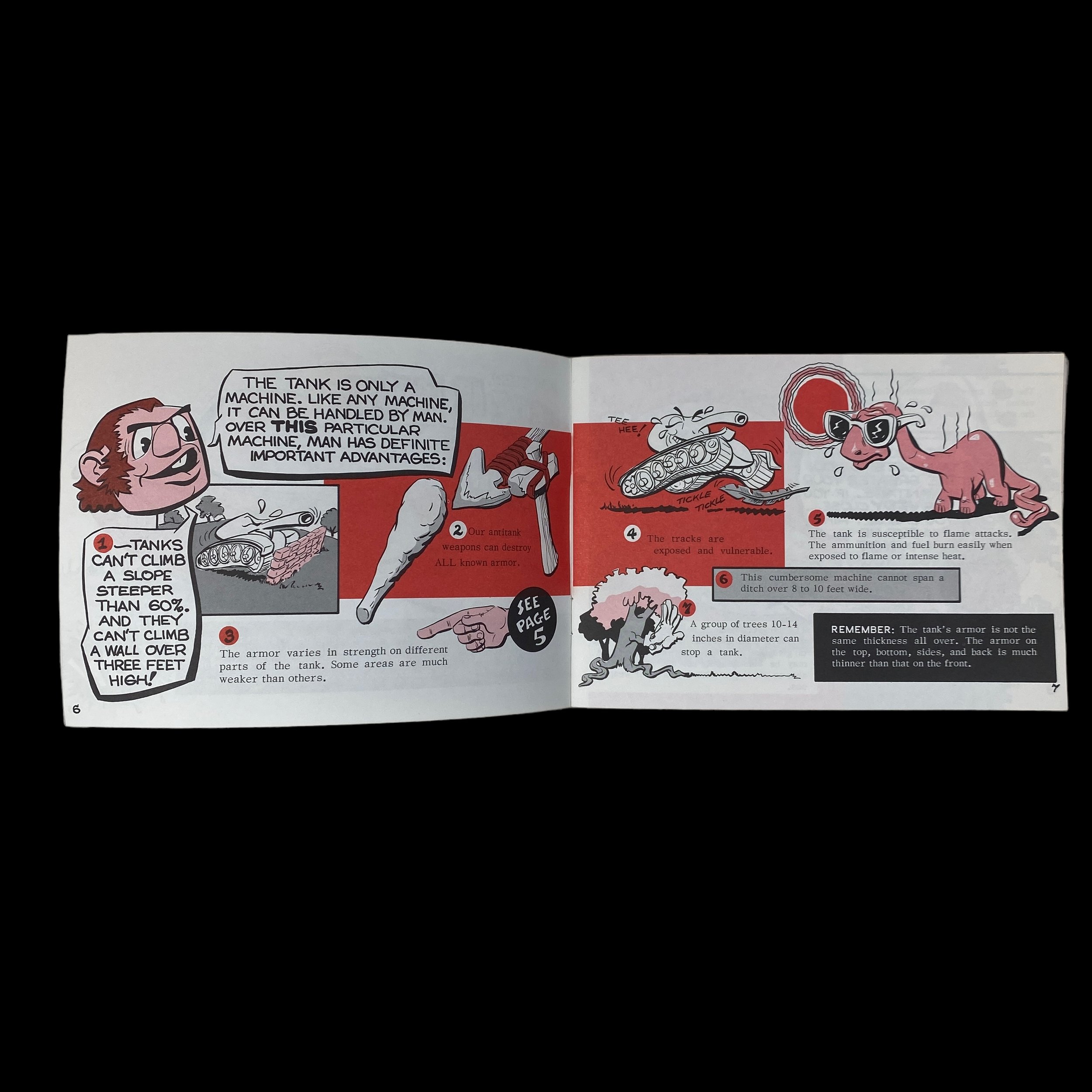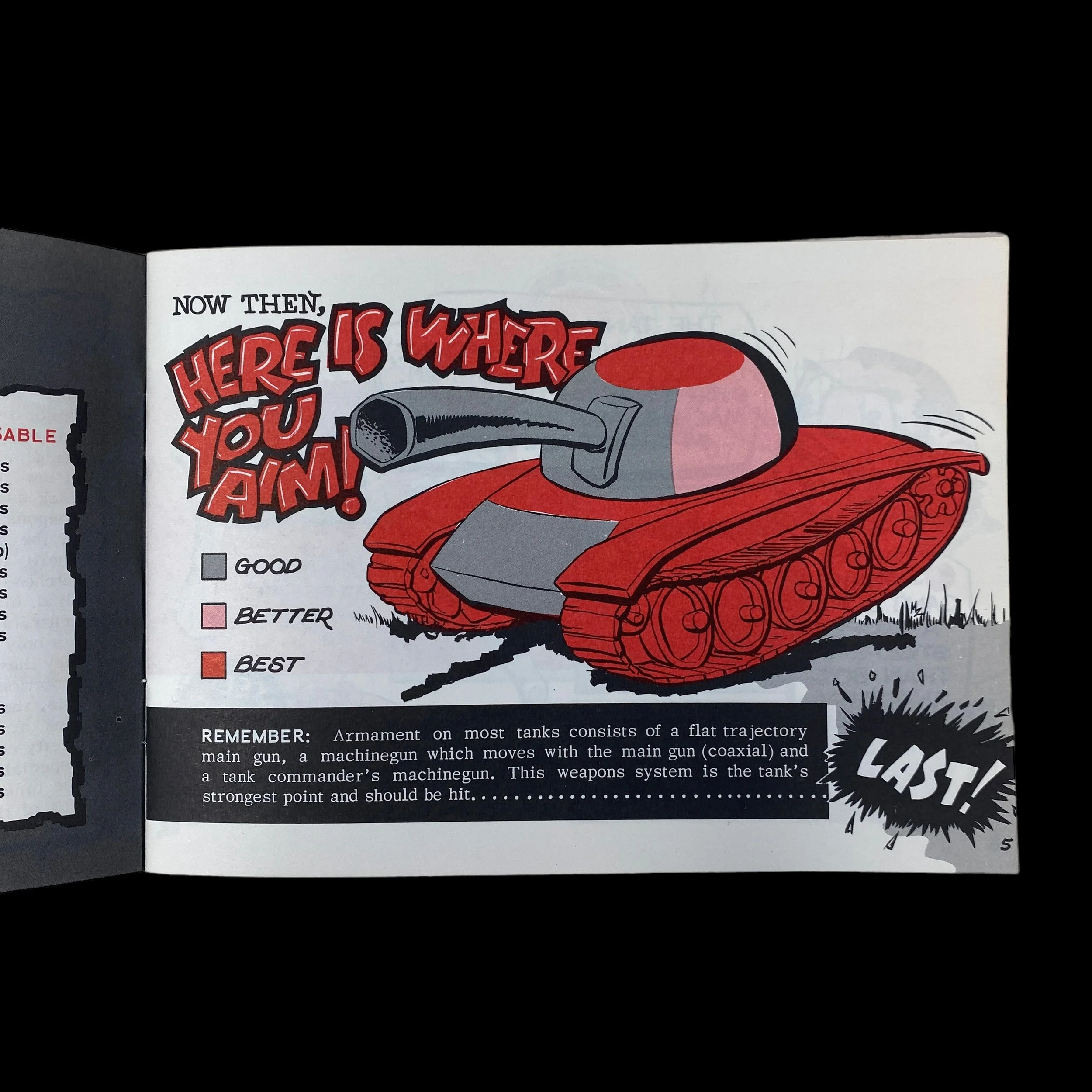RARE! 1972 Vietnam War Secretary of the Army Illustrative Manual “TO CATCH A TANK” FORT BENNING
























RARE! 1972 Vietnam War Secretary of the Army Illustrative Manual “TO CATCH A TANK” FORT BENNING
Comes with a hand-signed C.O.A.
This original and museum-grade Vietnam War artifact is a very unique and artistic pictorial manual made for U.S. soldiers during the Vietnam War. Titled “TO CATCH A TANK” this manual is more rare as this manual was specially contracted and made by the ANTI-ARMOR BOARD OF THE U.S. ARMY INFANTRY SCHOOL - FORT BENNING GEORGIA” by order of the Secretary of the Army.
Dated 1972 this visual manual is filled with the art and information that extensivly details: where to aim to disable a tank, tank armor, tank direction of attack, tanks on differing terrain, infantry and armor on the battlefield, etc.
The Vietnam War, lasting from 1955 to 1975, was a conflict marked by its unconventional nature and guerrilla warfare tactics. In this tumultuous period, tanks played a pivotal but often misunderstood role. Traditionally associated with open-field battles, the deployment of tanks in the dense jungles and challenging terrain of Vietnam required a significant adaptation of tactics and strategies.
Vietnam's unique topography presented a formidable challenge for traditional tank warfare. Thick jungles, marshy areas, and narrow trails rendered large armored vehicles like tanks impractical in many situations. The Viet Cong and North Vietnamese Army (NVA) capitalized on this terrain, utilizing hit-and-run guerrilla tactics that neutralized the advantages of conventional armored warfare.
Despite these challenges, the U.S. military, primarily the Army and Marine Corps, deployed tanks in an attempt to adapt to the demanding environment. The M48 Patton and the later M551 Sheridan were among the tanks utilized during the conflict. Equipped with flamethrowers and heavy machine guns, these tanks aimed to clear dense vegetation and engage enemy forces hidden in the underbrush.
While tanks faced limitations in certain terrains, they still made valuable contributions during the Vietnam War. One notable role was in providing fire support for infantry units engaged in close-quarters combat. Tanks served as mobile artillery platforms, capable of delivering devastating firepower to suppress enemy positions and provide cover for advancing ground forces.
Furthermore, tanks played a crucial role in securing and defending firebases – fortified positions used as strategic hubs. These firebases, often located in more open areas, allowed tanks to operate more effectively and respond to enemy threats. Additionally, tanks provided essential convoy protection, safeguarding supply routes against ambushes and attacks.
Recognizing the challenges posed by the terrain, the U.S. military sought to adapt its tank tactics during the Vietnam War. One notable innovation was the development and deployment of armored cavalry units. These units, equipped with lighter armored vehicles, such as the M113 armored personnel carrier, prioritized mobility and flexibility over heavy firepower. The goal was to navigate the challenging terrain more effectively while maintaining the ability to engage enemy forces.
Helicopter-borne armored cavalry became a significant component of this adaptation. Air mobility allowed tanks and other armored vehicles to be rapidly deployed to critical areas, addressing the limitations imposed by the dense jungles and challenging terrain. This approach emphasized the importance of flexibility and speed in responding to the fluid nature of guerrilla warfare.
The experience of using tanks in the Vietnam War left a lasting impact on military thinking and doctrine. The conflict highlighted the need for adaptable and versatile armored vehicles capable of navigating diverse terrains. As a result, the military shifted its focus towards the development of lighter, more maneuverable tanks and armored vehicles in the post-Vietnam era.
Moreover, the lessons learned from the Vietnam War contributed to the evolution of combined arms tactics. The integration of tanks with infantry, artillery, and air support became increasingly emphasized, acknowledging the importance of a coordinated and synergistic approach in modern warfare.
The use of tanks during the Vietnam War was a testament to the military's ability to adapt to unconventional challenges. While the dense jungles and difficult terrain posed significant obstacles, tanks played a vital role in providing fire support, protecting convoys, and securing strategic positions. The lessons learned from this conflict influenced subsequent developments in armored warfare, leading to the evolution of more versatile and mobile armored units. The Vietnam War showcased the importance of adaptability in military strategy, and the legacy of tank usage during this period continues to shape modern military thinking.